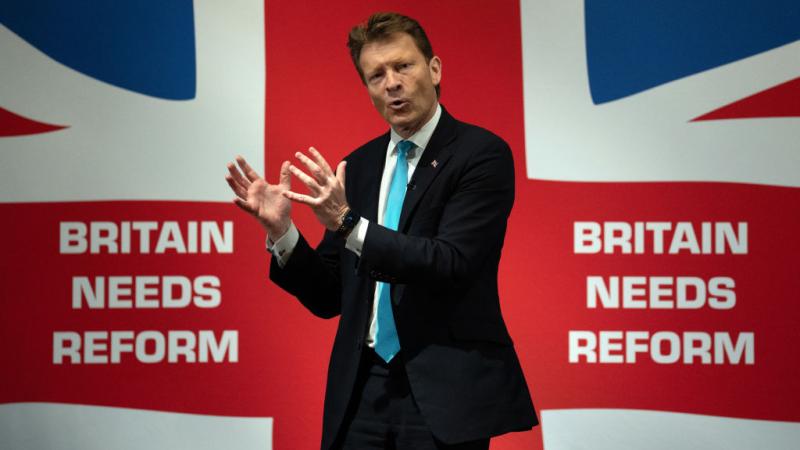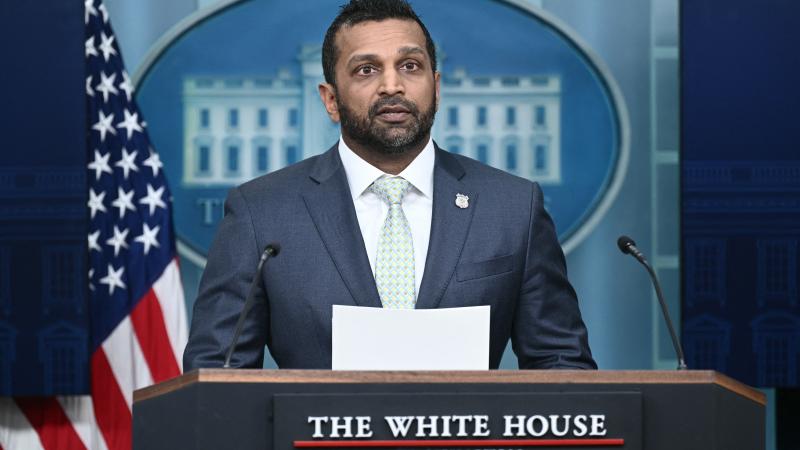Democrat governors signal post-Trump shift to less harsh COVID-19 restrictions
Hardline governors relaxing some rules in the first week of the Biden presidency, even as virus case levels remain elevated.
In recent weeks, high-profile anti-Trump governors have begun signaling a potential shift away from the hardline COVID-19 policies of the past year toward less restrictive mitigation measures — just in time, it seems, for the end of Donald Trump's presidency and the beginning of Joe Biden's.
Over the past year, state and local officials — elected and appointed, from governors on down — enacted myriad public health rules and regulations in an effort to slow or halt the spread of COVID-19. Frequently highly restrictive, such policies have ranged from widespread closures of "nonessential" businesses, to mask mandates, to bans on indoor dining, to numerous other relatively novel measures meant to reduce viral transmission throughout the country.
Though the efficacy of such measures is disputed, many public officials insisted that they were both necessary and open-ended, with leaders arguing that policies such as masking and social distancing would be in force for the foreseeable future.
Yet, starting as the Trump administration was winding down and continuing since its end, multiple governors politically hostile to Trump have been announcing what appear to be abrupt and in some cases underdetermined departures from earlier hardline approaches to COVID mitigation.
Among the most prominent shifts was that of New York Gov. Andrew Cuomo, whose COVID measures have been at times among the most severe in the country and who in the earlier months of the pandemic was effectively the public face of government efforts to control the virus.
Cuomo, whose state is the second-worst in the country for population-adjusted deaths behind only neighboring New Jersey, said on Dec. 16 that "a [statewide] shutdown in January is possible," explaining that he would determine that policy by how much cases rose in the following four weeks.
On the day Cuomo made that claim, about 11,000 New York State residents tested positive for the virus. A month later, daily average positive tests had risen significantly, with over 15,200 state residents testing positive on Jan. 11.
Still, on that date — just nine days before Trump was set to leave office — Cuomo delivered a markedly different message about lockdowns.
"We simply cannot stay closed until the vaccine hits critical mass," he wrote in a tweet on that day. "The cost is too high. We will have nothing left to open."
The governor argued that New York "must reopen the economy," though he qualified that the state "must do it smartly and safely."
In a press conference on Monday, meanwhile — citing declining case numbers after what he called the "holiday spike" of COVID-19 — Cuomo revealed that the state is "at a new place now, and we can start to adjust that valve and start to open up more economic activity and reduce some of the restrictions." On Monday, New York posted almost exactly 11,000 positive cases, nearly equal to the level at which Cuomo earlier threatened a statewide shutdown.
In Michigan earlier this month, meanwhile, Gov. Gretchen Whitmer — whose severe COVID mitigation policies have famously included a ban on "all public and private gatherings" — announced the relaxation of some COVID measures even as she had earlier suggested they might continue indefinitely.
On Jan. 8, Whitmer had argued that, prior to permitting indoor dining to resume in the state, she wanted to "make sure that it's safe to do so."
"[T]here's some encouraging signs," she said of COVID-19 case data at the time, "but we have to be really smart, and we're going to continue to watch the data."
Just two weeks later, on Jan. 22 — two days after the Biden administration began — Whitmer announced that she would allow indoor dining to resume again in the state.
"The pause has worked," she declared in a press release. "The efforts we have made together to protect our families, frontline workers and hospitals have dramatically reduced cases and we have saved lives. Now, we are confident that starting February 1, restaurants can resume indoor dining with safety measures in place."
As with Cuomo, the motivation behind Whitmer's decision was unclear. According to Michigan's data, on Jan. 8 when Whitmer expressed doubt about re-opening indoor dining, the state recorded 2,429 coronavirus cases. That represented a drop of almost 75% from the state's Nov. 10 peak of 9,611.
Cases continued to fall throughout January, yet Whitmer's reluctance to commit to reopening on Jan. 8 after such a sharp drop rendered uncertain her motivation for reopening just two weeks later.
Lynn Sutfin, a spokeswoman for Michigan's Department of Health of Human Services, told Just the News the state was "pleased to continue incrementally reopening the economy with the recent [department] order."
"We will continue to carefully watch the data to assess what other activities can be permitted," Sutfin said. "We are also laser focused on achieving our goal of vaccinating at least 70% of Michiganders age 16 and up as quickly as possible so we can end this pandemic and get back to a sense of normalcy."
Perhaps most notably, California Gov. Gavin Newsom this week lifted major COVID-19 restrictions in his state, a decision that he said was in response to favorable COVID-19 numbers there.
"We're seeing a flattening of the curve," Newsom said in a press conference on Monday. "Everything that should be up is up, everything that should be down is down — case rates, positivity rates, hospitalizations, ICUs."
Newsom's relaxation of his orders at this point is hard to explain in light of the circumstances under which he had earlier imposed such measures.
The governor issued his first stay-at-home order during the pandemic on Mar. 19, when the state had recorded just over 1,000 COVID cases. He issued his Nov. 19 regional stay-at-home order when the state's two-week rolling average of new COVID cases stood at around 8,650.
Yet the lifting of the latest order comes as the state's rolling average of new cases is at nearly 30,000. The test positivity rate, meanwhile, as of Tuesday was at 9%, roughly where it was in early December, when Newsom claimed that the state "want[ed] to see rates below 5% to create some semblance of stability."
Reached for comment, the governor's office did not directly remark on the re-opening, though it directed Just the News toward remarks made by California Health and Human Services Secretary Mark Ghaly earlier this week.
Ghlay in a press conference on Tuesday said the decision to lift the stay-at-home order was made “on pretty well-explained and pre-prescribed thresholds.”
“Transmission rates came down pretty significantly,” Ghaly said. “We’ve been sharing those numbers for weeks … We believe we lifted it at the right time.”
“This was not a regional stay-at-home order based on community transmission rates only,” he continued. “It was really focused on what we would see in the hospitals a few weeks out.”
Ghaly acknowledged that the state had foreseen a scenario in which “we’re lifting the regional stay-at-home order when still hospitals have pretty high census from COVID.” Those numbers, he said, are coming down “every single day for the last couple of weeks” and the state expects to be “at a level of concern in [hospitals] that is lower than where we’ve been especially over the last couple of weeks.”
And in Massachusetts, state Gov. Charlie Baker last week announced that the state on Mondaywould begin loosening COVID-19 measures put in place in early November, including personal and business curfews.
"Vaccines are reaching residents, positive case rates and hospitalizations have stabilized; those trends are moving in the right direction," Baker said in announcing the rollback.
Per the state's data, when Baker announced those measures on Nov. 3, the seven-day average of confirmed COVID cases in the state 1,298; on Monday that number was 3,425. The seven-day average of hospitalizations in the state on Nov. 3 was 446, while on Monday it was 2,072.
As Baker noted, the state's late-January numbers were on a steady decline, having been on a downward trend since the early part of the month, yet they still remain significantly elevated above where they were when the order went into place.
The shifts come amid other signals that the national and global calculus on COVID-19 may be changing to some degree.
Last week, after months of promising decisive and consequential action on the COVID crisis, President Joe Biden claimed that there is "nothing" the country can do to change the course of the pandemic "in the next several months."
The World Health Organization, meanwhile, earlier this month re-upped a warning about a widely used COVID-19 testing system, noting that the now-ubiquitous polymerase chain reaction tests used to detect COVID-19 can potentially return "false positives" and that at least some patients who test positive for the disease may not be "truly infected."
















